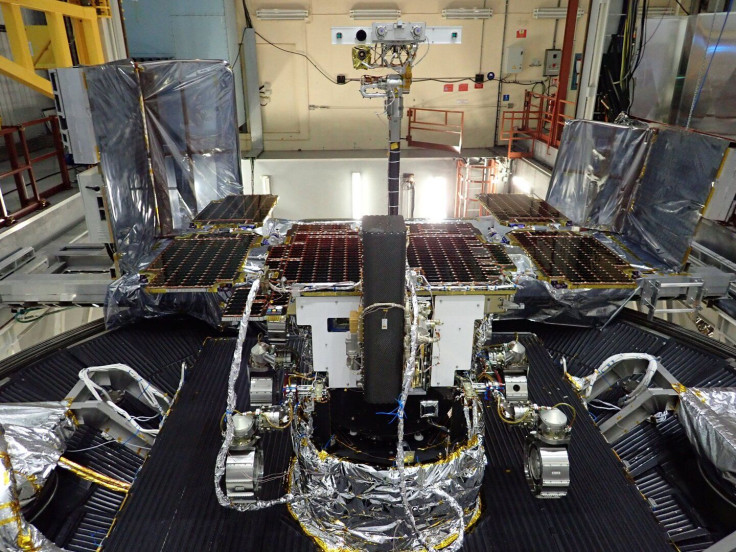ESA's Rosalind Franklin Rover Completes Environmental Tests

KEY POINTS
- ESA's Rosalind Franklin rover completed its environmental tests
- It was subjected to tests simulating what will it experience in space and on Mars
- The Rosalin Frankin rover is expected to launch by July or August of 2020
The European Space Agency’s (ESA) Rosalind Franklin rover has completed a series of environmental tests, taking another step closer to its launch later in 2020.
ExoMars Rover Environmental Tests
For the key environmental tests conducted at Airbus, Toulouse, France at the end of 2019, the Rosalind Franklin rover was subjected to thermal and vacuum tests to simulate what it will experience during its space journey and on the Martian surface. For instance, it must endure extreme temperatures and operate in a carbon dioxide-rich atmosphere with less than a hundredth of Earth’s atmospheric pressure.
As part of the thermal vacuum testing, which lasted for about 18 days, the rover was heated and cooled to mimic two “hot” and two “cold” Martian days, each of which lasting for 24 hours, 39 minutes and 35 seconds.
After the key environmental tests, the focus will now turn to make final checks on the rover’s systems.
"This includes checking the alignment of instruments working together, such as the imaging systems, and a final functional test of the integrated system after the environmental campaign," ESA notes. “Once these verifications on the rover are completed, a functional check of the interfaces with the surface platform and descent module that will deliver it safely to the surface of Mars will be performed at Thales Alenia Space, Cannes, France,”
The Rosalind Franklin is expected to launch between July 26 and Aug. 11, 2020, aboard a Russian Proton-M rocket with a Breeze-M upper stage from Kazakhstan. Should things go according to plan, the rover will arrive on Mars by March 19, 2021.
ExoMars Mission
The ExoMars mission is a joint project by the ESA and Russia’s Roscosmos with contributions from NASA. The main goal of the mission is to seek evidence of current or past life on Mars and to better understand why Mars used to host water but is now dry.
In hopes of finding answers to these questions, the Rosalind Franklin rover will study the Martian surface and even drill down up to two meters into the surface to retrieve small samples for its on-board laboratory.
During its mission, the Rosalind Franklin is expected to travel several kilometers or about 100 meters per Martian day. Beyond the ExoMars mission, the ESA is already working with NASA to return Martian samples to Earth.
The rover’s name honors Rosalind Elsie Franklin, a British chemist and X-ray crystallographer who contributed to unraveling the double helix of the DNA. The name was chosen from over 36,000 entries from the public.
© Copyright IBTimes 2025. All rights reserved.






















